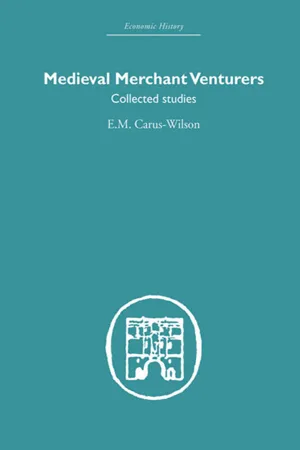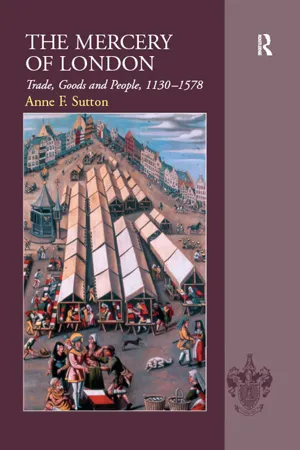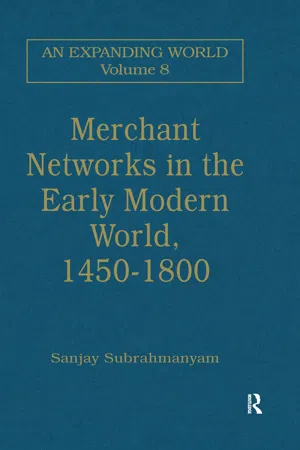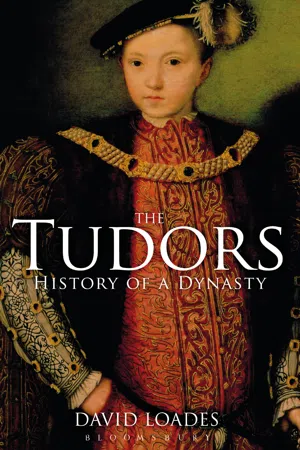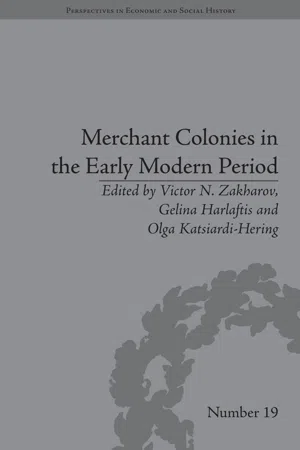History
Merchant Adventurers
Merchant Adventurers were individuals or groups of merchants who engaged in overseas trade and exploration during the Age of Discovery. They played a significant role in expanding European trade networks and establishing colonies in the Americas and Asia. These ventures were often risky and required substantial financial investment, but they contributed to the growth of global commerce and the exchange of goods and ideas.
Written by Perlego with AI-assistance
Related key terms
5 Key excerpts on "Merchant Adventurers"
- eBook - ePub
Medieval Merchant Venturers
Collected Studies
- E.M Carus-Wilson(Author)
- 2013(Publication Date)
- Routledge(Publisher)
262 ; and though originally it was known as ‘‘the Company of Merchant Adventurers of England trading to Holland, Zealand, Brabant, Hainault and Flanders”, it gradually dropped this cumbersome designation and, since it had absorbed so large a number of Adventurers, virtually arrogated to itself the simple title of “the Merchant Adventurers of England”. Thus the term “Merchant Adventurers’ Company”, as used by historians, most often denotes the specific company of the Netherlands. It is just as necessary to distinguish this from the other less long-lived groups as it is to distinguish the organized groups from the individual Merchant Adventurer.It is, then, to the Netherlands group of Adventurers, to which in the later fifteenth century flocked many Adventurers from other regions, that we must look for the origins of the body known as the Company of Merchant Adventurers of England. When we come to examine the existing authorities for its history, their one-sided character is at once obvious. From a long series of charters and letters patent first brought together by Schanz in 1881 in his Englische Handelspolitik ,263 and now supplemented by some earlier versions printed by Jansma,264 an outline narrative has already been compiled of the settlement in the Low Countries and of the privileges of self-government granted there by English kings and foreign princes. The organization by which the merchants managed their affairs in the Netherlands during their visits to the marts in the late sixteenth and seventeenth centuries has also been analysed by Professor Lingelbach, from their own Laws and Ordinances as then recorded by their Secretary.265But though the organization of the Netherland Adventurers abroad has often been dealt with, the English side of their activities during the formative period of the Society’s growth has received scant attention. The merchants must have resided in England for a great part of the year, going overseas when they had to attend the marts, yet whether their common interests were reflected in any formal association at home has remained entirely unknown. We know so little about what they did here that historians have been deluded into supposing, as van Brakel postulates in Die Entwicklung und Organisation des Merchant-Adventurers, that “their organized activities in England were neġligible”.266 - eBook - ePub
The Mercery of London
Trade, Goods and People, 1130–1578
- Anne F. Sutton(Author)
- 2016(Publication Date)
- Routledge(Publisher)
From about 1550 there was a pronounced change in royal and conciliar perception of merchants and trade. The crash of the cloth market caused consternation and both the Adventurers and the English government were forced to recognize that the cloth industry was not capable of infinite expansion. Other trades had to be cultivated. The long overdue increase of the customs rates accomplished for Queen Mary suddenly linked the crown to a large source of income dependent on prosperous trade. The advice of Adventurers and trade statistics became of daily interest to the privy council and the London Adventurers were able to score major victories over their main competitors: the Hanse, the Italians and the English provincial merchants. Once Elizabeth was queen, the Adventurers also benefited from a monarch who had neither a personal inclination for war nor a husband with wars of his own.Despite these improvements, the Adventurers had to face up to the destruction of their trade with Antwerp from 1563, when religious differences became acute enough to destroy the ancient amity and intercursus. They were forced to reorientate to more northerly ports. On the back of their successes and this reorientation, the Adventurers were also able to achieve the full reorganization of their company, initiated by Governor Hewster before his death in 1525: the power of the overseas courts was relocated to London and the ‘young men’ and residents abroad firmly restrained. In all these changes, mercers were among the key actors.i. The Years of Profit, Crisis and Victory: The Mercers as Adventurers, 1520s–58 The Merchant Adventurers’ two annual, conducted fleets in May and November, to which they were now accustomed, allowed them to accomplish shipments of cloth every year, despite politics, wars and piracy, as the accounts of Thomas Kitson, 1512–39, testify.3 The London adventurers’ share of the export of English cloth increased at an amazing rate. In the 1490s 38,600 cloths were exported each year from London and in the 1540s 108,100 each year. In the decade 1500–10 at least sixty-one per cent of English cloth exports were via London; in 1534–44 this had risen to eighty-four per cent; and in 1568–69 to ninety-three per cent. In 1560 it had been assessed as worth about £1 million by the knowledgeable George Nedham.4The share of mercers in this London trade has been analysed, although the figures are necessarily limited by the poor survival of records. It has been found that over the complete year of 1534–35 there were 164 men shipping more than forty cloths each, with thirty-one of them accounting for between 400 and over 1,000 cloths each. The mercers’ share of this was 49.3 per cent; and they made up a substantial proportion of the larger shippers. Of the 164 men, however, a mere twenty-five shippers captured 47.5 per cent, and those with forty cloths or less were left with a mere 7.7 per cent of the total.5 The trade was passing into the hands of a wealthy few, among whom the Gresham brothers, Richard and John, were the two largest exporters, with William Gresham in ninth place.6 In 1547–48, 139 men exported more than a hundred cloths each, among whom there were fifty-six mercers, but their share of the top end of the market had now dropped to 37.6 per cent. This share was still healthy: between 1490–1548 it averaged at 42.36 per cent, but it had begun to fall.7 Everything on the surface looked good for mercers, but the health and wealth of the Mercers’ Company as a whole would inevitably suffer if the middling men found it harder to make a good living. England’s cloth exports were growing, and Londoners enjoyed an ever-increasing share, but the number of individuals involved was fewer, creating a small powerful group, which could dictate policies. This trait was not unique to the Adventurers’ Company, it was also apparent among the Staplers, and it was to be a characteristic of all the new trading companies established in the sixteenth century. Nor did this happen by accident, it was the policy of the richer men, and to this we will return.8 - Sanjay Subrahmanyam, Sanjay Subrahmanyam(Authors)
- 2016(Publication Date)
- Routledge(Publisher)
2 This argument contains some validity. Nevertheless, it has tended to impart a misleading impression of the motive force of Elizabethan commercial change and of its relationship to previous commercial trends. The trades that emerged from the expansionary thrust which extended from Russia to the Levant to the East Indies during the second half of the sixteenth century did not begin to solve the problems of the cloth export trade, nor were they by and large intended for this purpose. They were not set in motion primarily by the Company of Merchant Adventurers, the chief cloth exporters of the period. They were organized, instead, by import merchants aiming to obtain at their source eastern products which had formerly been secured through middlemen in the Low Countries and Portugal. Thus, the new trades developed in close connection with one another, but separately from the Merchant Adventurers’ cloth export business which had previously dominated English commerce. And this is understandable only in light of their constant focus on oriental import commodities and their relative inability to provide export markets for cloth. Elizabethan commercial entrepreneurship was, in organization and personnel, largely discontinuous with that of the Merchant Adventurers because it had very different goals. It is in this sense that the Elizabethan expansion should be seen to mark an important break and a new stage in the development of English trade.The search for the spices and gold of the East was the primary motivation for the founding of the Muscovy Company (1553-1555), the first major step in the process of expansion.3 It is true, nevertheless, that Merchant Adventurers composed a significant proportion of the original investors in the Muscovy joint stock, possibly one-third. And they were probably attracted to this venture, at least to some extent, by the hope of discovering new areas of demand for their cloth exports.4 Even then, it is worth noting that most of these Adventurers did not take an active part in the Company’s decisionmaking, remaining passive investors in its joint stock. In the event, Russia proved to be incapable of absorbing large quantities of English cloth. English cloth exports to Russia over the period before 1620 did not exceed 2500 cloths per annum, less than 3 percent of England’s total cloth exports.5- eBook - ePub
The Tudors
History of a Dynasty
- David Loades(Author)
- 2012(Publication Date)
- Continuum(Publisher)
3 The same rules applied: the company was open to merchants of other towns, and controlled the trade only to the Low Countries. However, the demand for unfinished cloth was negligible elsewhere, and the Merchant Adventurers soon acquired a monopoly in the full sense.Unlike his predecessors, Edward IV had adopted a very ‘hands-on’ approach to the merchant community of London. He knighted Aldermen and invited them (and their wives) to court, in the interests of maintaining the political allegiance of the capital, which meant a lot to him.4 He also traded extensively in his own right, using his own factors, many of whom were Italians.This same king in person, having equipped ships of burden, laded them with the very finest wools, cloth, tin, and other products of his realm, and like a man living by merchandise, exchanged good for goods, both with the Italians and Greeks, through his factors…5wrote the (somewhat scandalized) Crowland chronicler. He even waged a confused and intermittent war with the Hanseatic League between 1568 and 1573 in defence of the privileges of the Merchant Adventurers. The Hanse enjoyed the right of trading Baltic goods to England, and had been using that status to export cloth to the Low Countries in defiance of the Adventurers’ monopoly. By the Treaty of Utrecht, which brought that war to an end, all privileges were confirmed, and the English were promised a reciprocal arrangement which would give them access to the Baltic ports. That never happened in practice and friction between the Adventurers and the Hanse continued into the sixteenth century. However, merchants were good tax-payers, and the Crown regularly provided ‘wafters’ or escorts, not only for the Icelandic fishing fleet, but also for the annual convoy of ships bearing the cloth which had been gathered at Blackwell Hall in London to its finishing market in Bruges, Ghent and Antwerp.6 - eBook - ePub
- Victor N Zakharov, Gelina Harlaftis, Olga Katsiardi-Hering, Victor N Zakharov, Gelina Harlaftis, Olga Katsiardi-Hering(Authors)
- 2015(Publication Date)
- Routledge(Publisher)
Its foreign trade by that time was of very limited size and scope and consisted mainly of the export of woollen cloth and the import of luxuries. Some of this commerce was conducted directly with the Baltic and the Mediterranean. These two trades were firmly in the hands of Hansards and Italian merchants, respectively, and English merchants played only a marginal role in them. The greater part of England’s foreign trade was carried on with Antwerp and handled by the royally chartered Company of the Merchant Adventurers. The Merchant Adventurers did not need to go farther than Antwerp as traders from all over Europe met there to do business. In Antwerp the English sold their cloth and bought the products England needed in return. From Antwerp continental merchants distributed the English cloth over a large area. The town on the river Scheldt had an English merchant colony within its walls as the Adventurers had their apprentices resident there to facilitate their trade. 16 After 1550 big changes occurred in England’s foreign trade. The demand for English woollen cloth stagnated in its traditional European markets. Cloth exports were, in addition, hampered by the difficulties which resulted from religious troubles and war in Antwerp, which lost its position as England’s outlet when, in 1585, during the Dutch Revolt, the port fell into Spanish hands and the Dutch henceforth blockaded its access to the sea. All these problems led to a ‘commercial push’ of English merchants into new areas in Europe and beyond. 17 Finding new markets was vital. From the early 1550s the quest led the English to Russia via the White Sea, to the Baltic and to the Mediterranean. Direct access to these markets was developed and maintained by companies that were founded expressly for that purpose. The Russia Company originated in 1555, the Eastland Company in 1579 and the Levant Company in 1581
Index pages curate the most relevant extracts from our library of academic textbooks. They’ve been created using an in-house natural language model (NLM), each adding context and meaning to key research topics.
